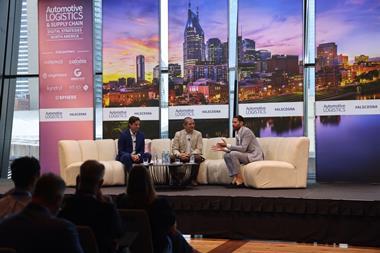Cho Jae Hong, alias ‘Joe’, is thrilled. He has just suceeded in his mission of creating a 'central control room' (CCR) for Glovis India, Hyundai’s logistics subsidiary.
The project, which was initially mooted three years ago, was completed in record time by the young assistant manager for sales and procurement at telematic firm Hyundai AutoEver (which, like Glovis, is owned by Hyundai Motors) and his team. So far, Glovis, Hyundai Motors India and its overseas clientele elsewhere are happy with the outcome.
It all began when Glovis India’s Min Joo started exploring opportunities to provide ‘extra customer delight’. Supply chain visibility was determined to be near the top of customer wish lists. “We noticed a lot of companies undertake trace and tracking of vehicle and vessel movements on surface, air and ocean,” says A Ramana, senior general manager of Glovis India, and Glovis’s pointsman for this project. “We began to ask whether these activities were meaningful and results-oriented.”
Once Min Joo greenlit the project, Joe jumped in. “My brief from top management was a quick roll-out”, he says. Joe identified local software and hardware vendors, facilitated exchange and dialogue on Glovis India’s requirements, demonstrated the project at an exhibition in Chennai, and trained manpower to handle daily operations for the roll-out – all in a span of ten months.
Along with domestic inbound and outbound cargo movements, one area that the company decided to focus on was flows between India and Turkey, as Hyundai exports parts produced in India to its Turkish plant in Izmir.
Meenakshi Bhaskar, senior officer at Glovis India and part of the CCR project, tracks the containers carrying auto components from India to Turkey, including monitoring the
vessel movement from the crowded port of Chennai to Evyap port on the Turkish coast, to ensure her client is fully aware of the status of the vessels carrying components.
“Where they are and when they will arrive are key questions,” she says. “We also track the status of containers, including how long they were kept at any port. This input is essential to ensure they clear incoming boxes within the stipulated time and save them from coughing out demurrages or wharfage.”
Until the advent of the CCR, this work was carried out by collating inputs provided by liners and sending an e-mail. Now, Bhaskar posts actual locations every day on a global map (regularly, although not in real time), which facilitates better visibility for all stakeholders.
Soumya Chakraborty, senior officer for container freight station (CFS), and now part of the CCR team alongside Bhaskar, visualises better times ahead now that the tracking and monitoring is in place. He points out that on any given day, there are more than 2,500 vehicles on the move in India and abroad to service Glovis India clientele. This quantity has to be pushed out of factory gates for domestic consumption as well as exports.
At times, Glovis India has to clear 90 containers daily at Chennai port for exports and imports, requiring services such as port management, customs clearance, freight forwarding and CFS. This is where tracing and tracking becomes important, he stresses.
What exactly has this project given to Glovis India?
“We wanted vessel tracking on a map for easy display, auto refreshing of the screen every ten minutes, and the ability to generate reports via Excel files,” says Chakraborty. The system is also able to live stream vehicle movement across Indian roads, thanks to Trimble software.
The biggest takeaway of this project is the improved efficiency, adds Chakraborty. While Chennai port congestion remains an issue, the other operations have benefited from constant vigilance and quick action on the ground.






































